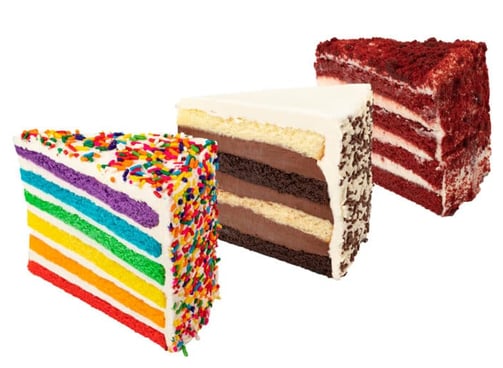Understanding Blockchain Layers
Do you find Blockchain mind-boggling? We explain how this technology is like cake. Tuck in!
10/30/20243 min read


Understanding Blockchain Layers: The Cake-Like Structure of a Complex Technology
Imagine blockchain as a delicious, multi-layered cake. Each layer has a unique purpose and contributes to the whole, creating a solid foundation for everything on top. While we can't eat this cake, understanding its "layers" will help us grasp how blockchain works and why it's such a game-changer in technology. So, grab a fork (or mouse) and let’s dig into the layers!
Layer 1: The Base Layer - The "Baker's Foundation"
In a cake, the base layer holds everything up. Similarly, in blockchain, Layer 1 is where all the core ingredients come together. Known as the "Base Layer" or "Foundation Layer," it provides the underlying framework for a blockchain. This layer is responsible for security, decentralization, and how transactions are validated.
Examples: Bitcoin and Ethereum are classic Layer 1 blockchains. They process transactions, secure the network, and prevent any tampering with data.
How It Works: Layer 1 uses consensus mechanisms like Proof of Work (PoW) or Proof of Stake (PoS) to validate transactions. PoW relies on miners solving complex problems, while PoS uses "validators" chosen based on their stake in the network.
In Cake Terms: Without a solid base layer, the whole cake would collapse. The blockchain's foundation keeps everything secure and functioning smoothly, much like a firm cake layer does.
Layer 2: The Middle Layer - Adding the "Frosting"
Every good cake has frosting in the middle, adding flavor and binding layers together. In the blockchain world, Layer 2 solutions do a similar job by making transactions faster and cheaper, especially as more people use the network.
Examples: Lightning Network for Bitcoin and Polygon for Ethereum are popular Layer 2 solutions.
How It Works: Layer 2 takes transactions "off-chain" (outside the base layer) to reduce congestion. Once processed, these transactions are later bundled and added to the base layer. This method makes transactions quicker and cheaper without compromising security.
In Cake Terms: Layer 2 is like adding frosting that keeps the cake layers intact and enjoyable. It lets users have a smooth experience without overloading the system—no crumbling, just delicious consistency!
Layer 3: The Top Layer - The "Decorations" and "Flavors"
The final layer in our blockchain cake is all about making it interactive and versatile. Known as the "Application Layer," it’s where developers build apps that let users interact with the blockchain in interesting ways—like using a dApp (decentralized application) to trade tokens, play games, or even vote!
Examples: DeFi (Decentralized Finance) platforms, NFT marketplaces, and gaming dApps all live in Layer 3.
How It Works: Layer 3 taps into the power of Layer 1 and 2 to offer applications that anyone can use. Whether it's a financial transaction, trading collectibles, or voting on a platform, Layer 3 is where blockchain becomes engaging and practical.
In Cake Terms: Imagine intricate decorations, frosting art, or even edible gold leaf that make a cake visually stunning and enjoyable. Layer 3 is what makes the blockchain "delicious" and usable, offering features that attract and delight users.
The Sweet Takeaway
Just like a cake has layers that work together to create a satisfying treat, blockchain’s layers work in harmony to ensure security, scalability, and usability. Each layer has a role to play, from the secure base to the efficient middle layer and the interactive applications on top.
For anyone just starting out, think of blockchain as a carefully crafted cake where every layer adds value. Whether you’re here for secure transactions, speedy transfers, or exciting apps, blockchain has something for everyone. The beauty of this cake is that it’s constantly evolving, with new "ingredients" being added to make it even more efficient and versatile.
So, next time someone asks you about blockchain, tell them to think of it like a layered cake—where each layer has a distinct role, working together to create something truly revolutionary.
Copyright Gettone 2022/2024 hello@gettone.io
